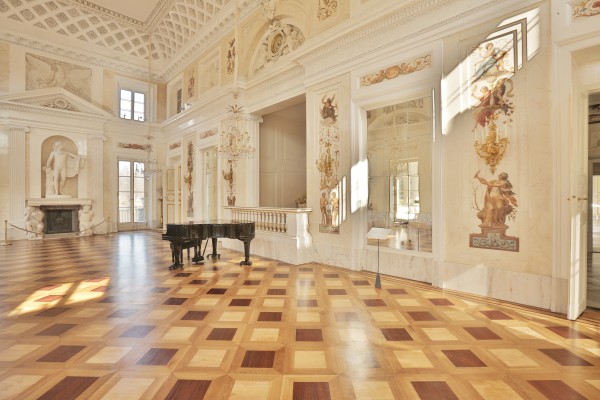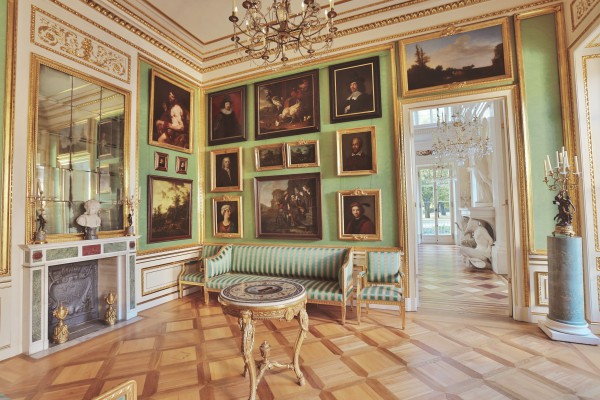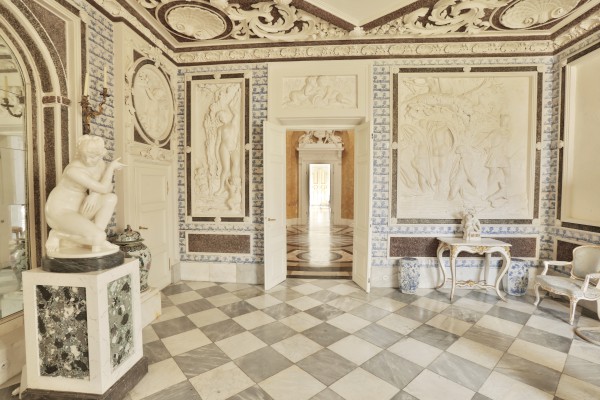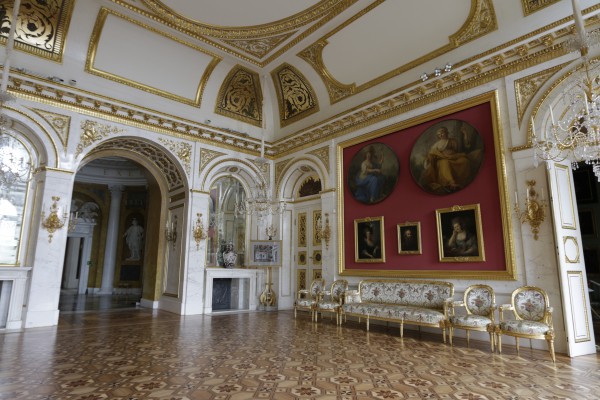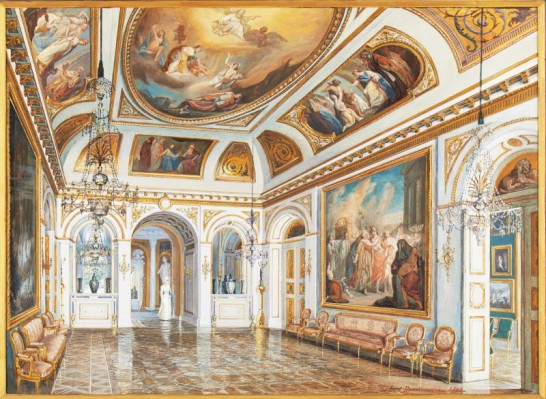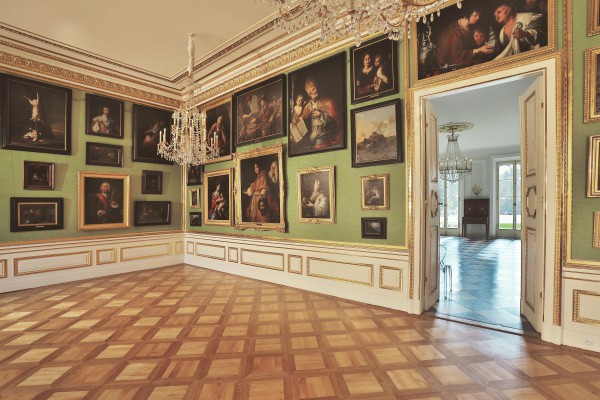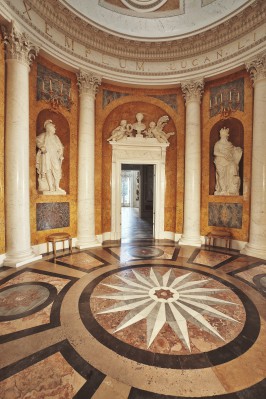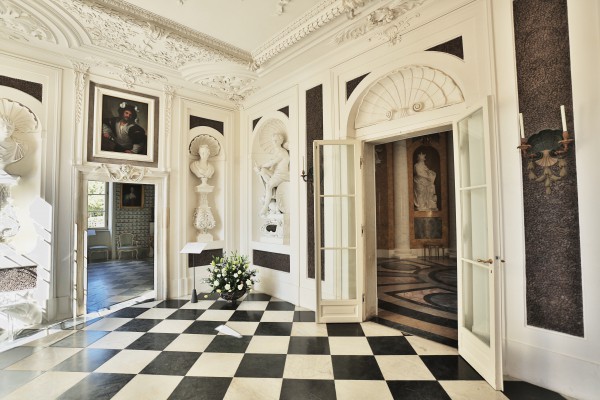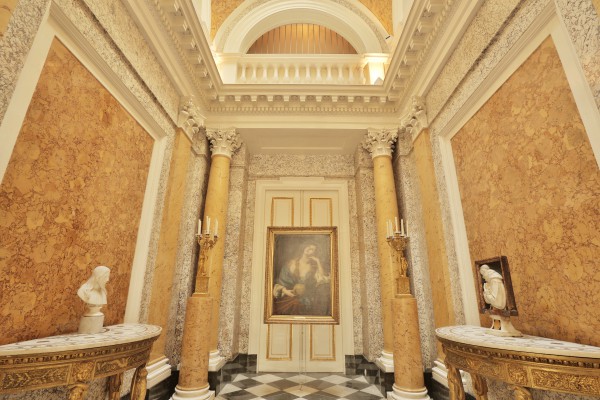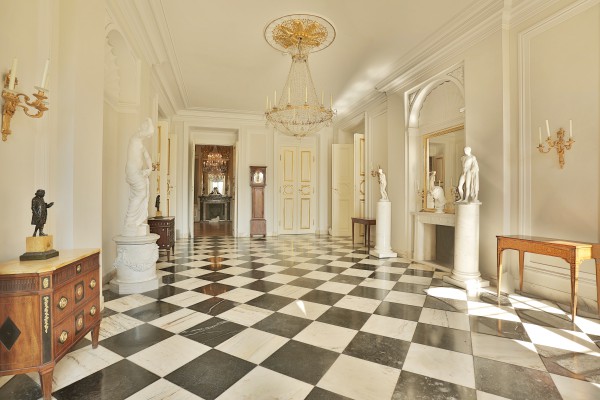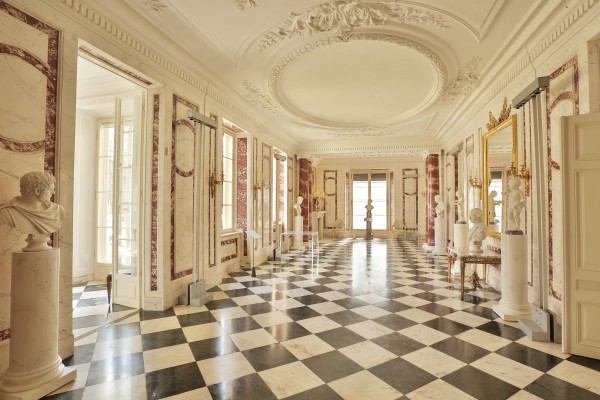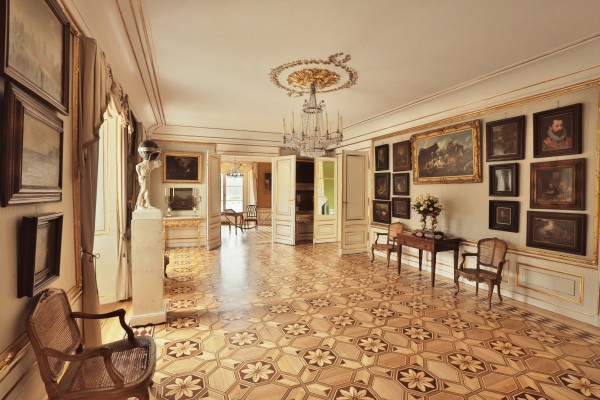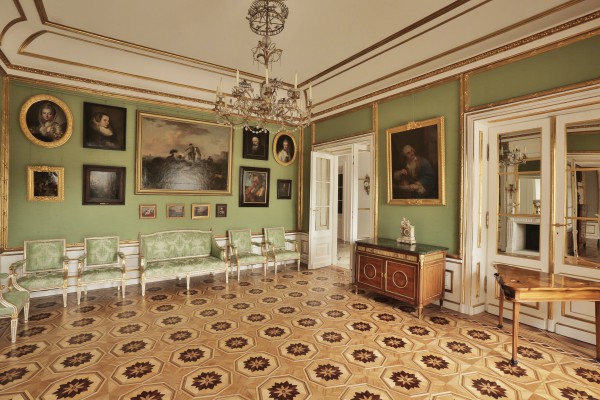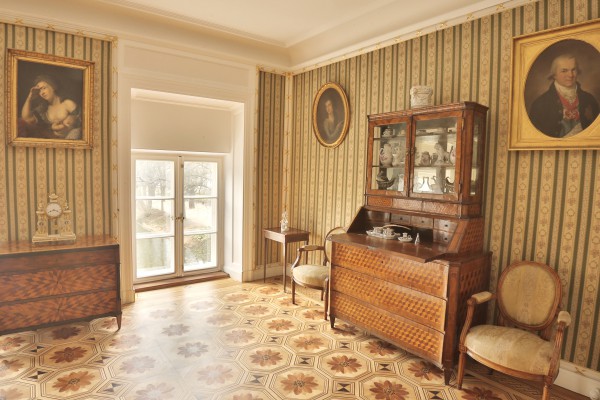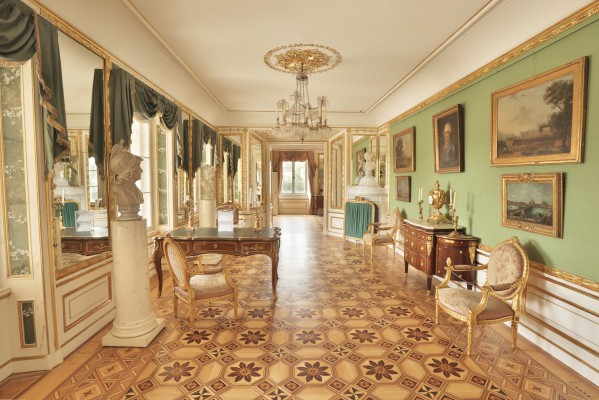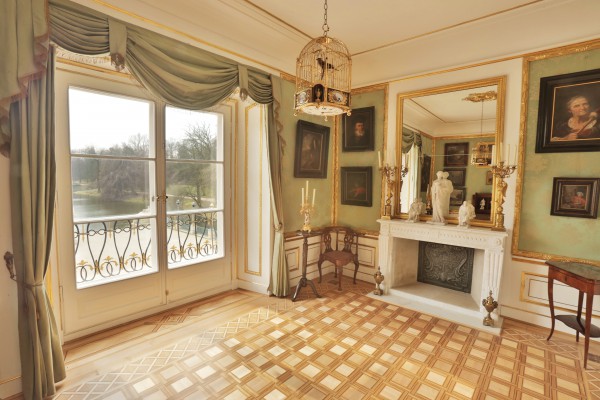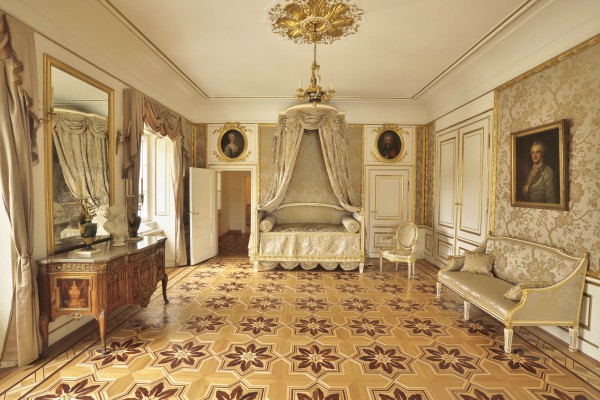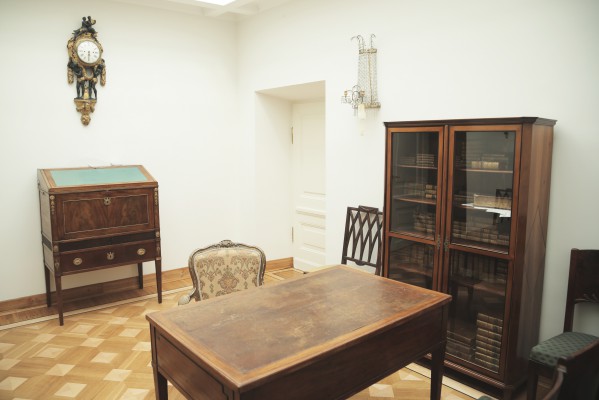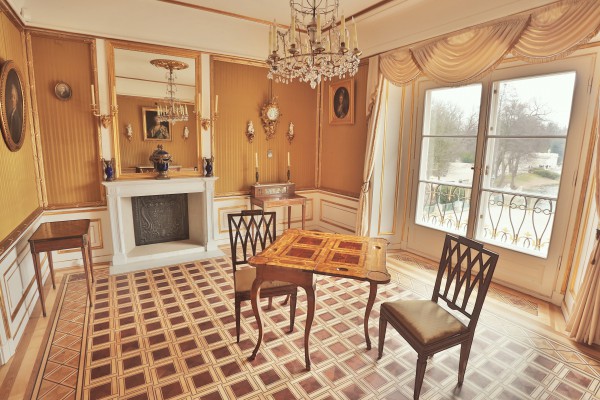
The Hallway (1st floor)
The first interior of the first floor was built during the expansion of the Bathhouse in 1788. Contrary to the stately function of the ground floor rooms, the second storey of the Palace was intended for purely residential purposes. In 1944, the first floor burned down, and its present shape is the result of a reconstruction.
The Hallway leads to private rooms of Stanisław August. It was a Classicist interior, in which wall partitions and decorations have been designed with symmetry in mind. In order to preserve symmetry, a pair of mirrored doors has been placed on walls. In the times of Stanisław August, at the spot of the today’s fireplace stood a tile stove, and between the windows hung a mirror. The walls of the room have been lined with green silk which forms a background for numerous paintings from the Royal Collection. Here, Stanisław August followed in the steps of English art collectors, who – in their rural residences – organised galleries of beautiful objects. From among the paintings collected on the northern wall, the most striking is the painting Prince de Nassau Hunting a Leopard by Jean-Baptiste Le Paon, which is situated in the centre. It is surrounded by smaller works of art taken from various schools of modern European painting art. These include German (e.g. portraits by Jakob Sacks and Anna Sacks), Italian (e.g. Bath of Baby Jesus by Raphael, or the Offering in the Temple by an unidentified artist) paintings, and a small one, but worth special attention – the Portrait of a Woman in a Turkish Costume by a Swiss painter, Jean-Etienne Liotard. On a separate wall is the famous Portrait of King Stanisław August with an Hourglass painted by Marcello Bacciarelli in early 1793. It depicts the King in a bed robe, in a private study, resting his hand on an hourglass placed inside a crown. It is a painting with a deep, erudite, symbolic meaning, conceived by Stanisław August himself. Many copies of this painting were made on King’s request. Here, the monarch presents himself in a state of dismay, foretelling his abdication and lamenting his unfortunate reign. The last wall is decorated with portraits of figures from the King’s entourage, including among others Helena Radziwiłowa from the Przeździecki family, the founder of the Arcade near Nieborów. Another portrait depicts Prince Stanisław Poniatowski – King’s nephew and one of his favourites.
